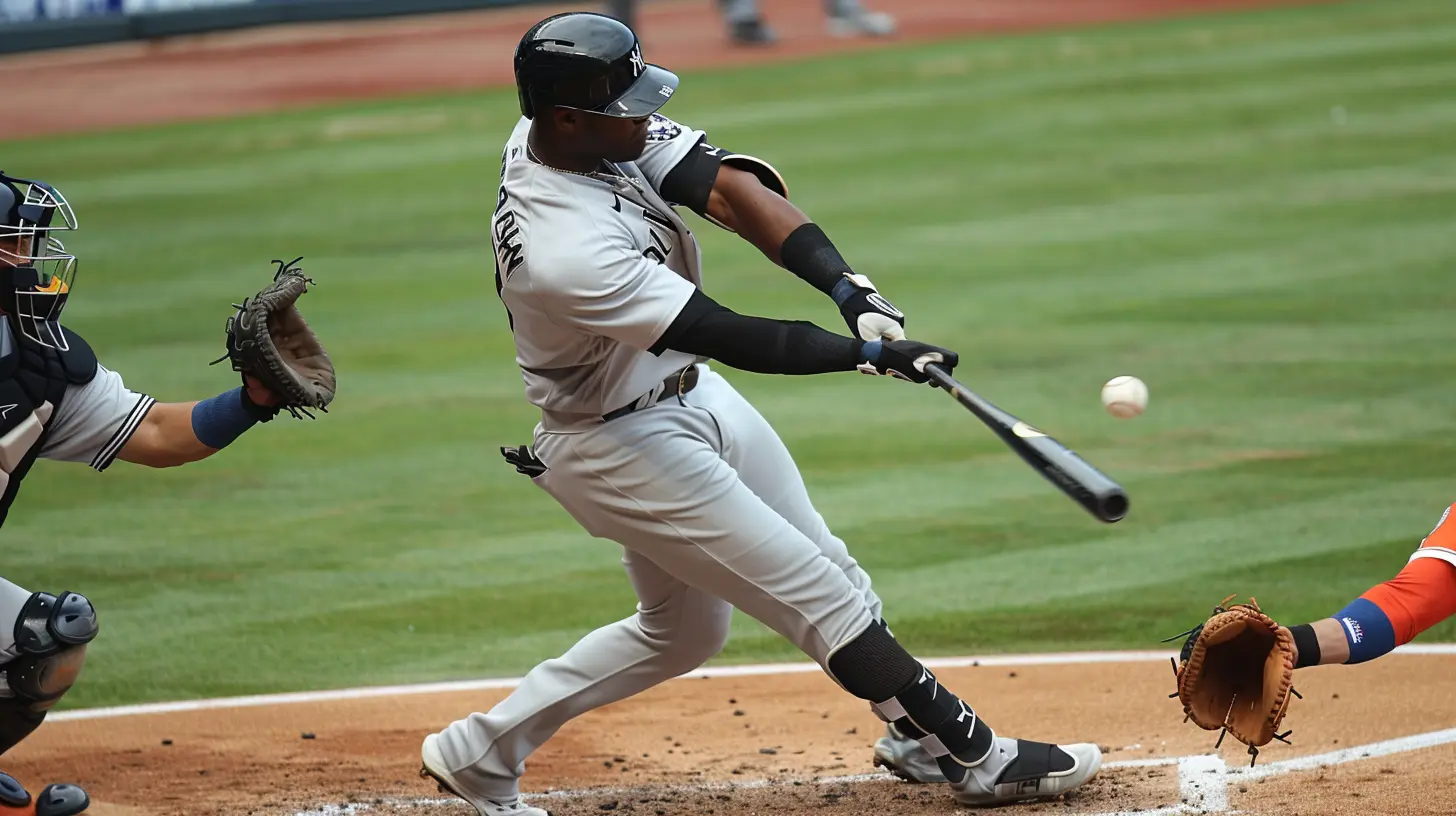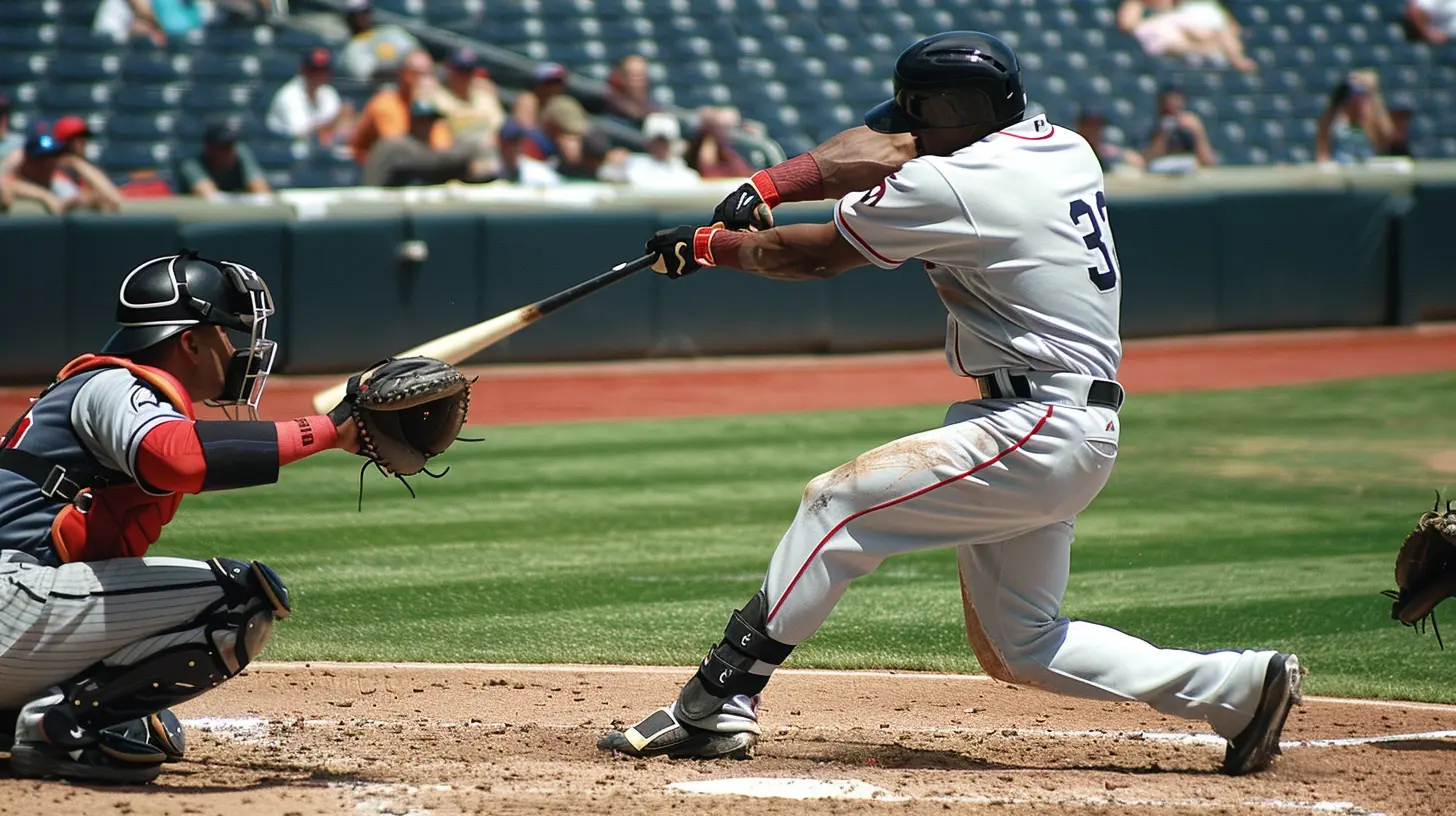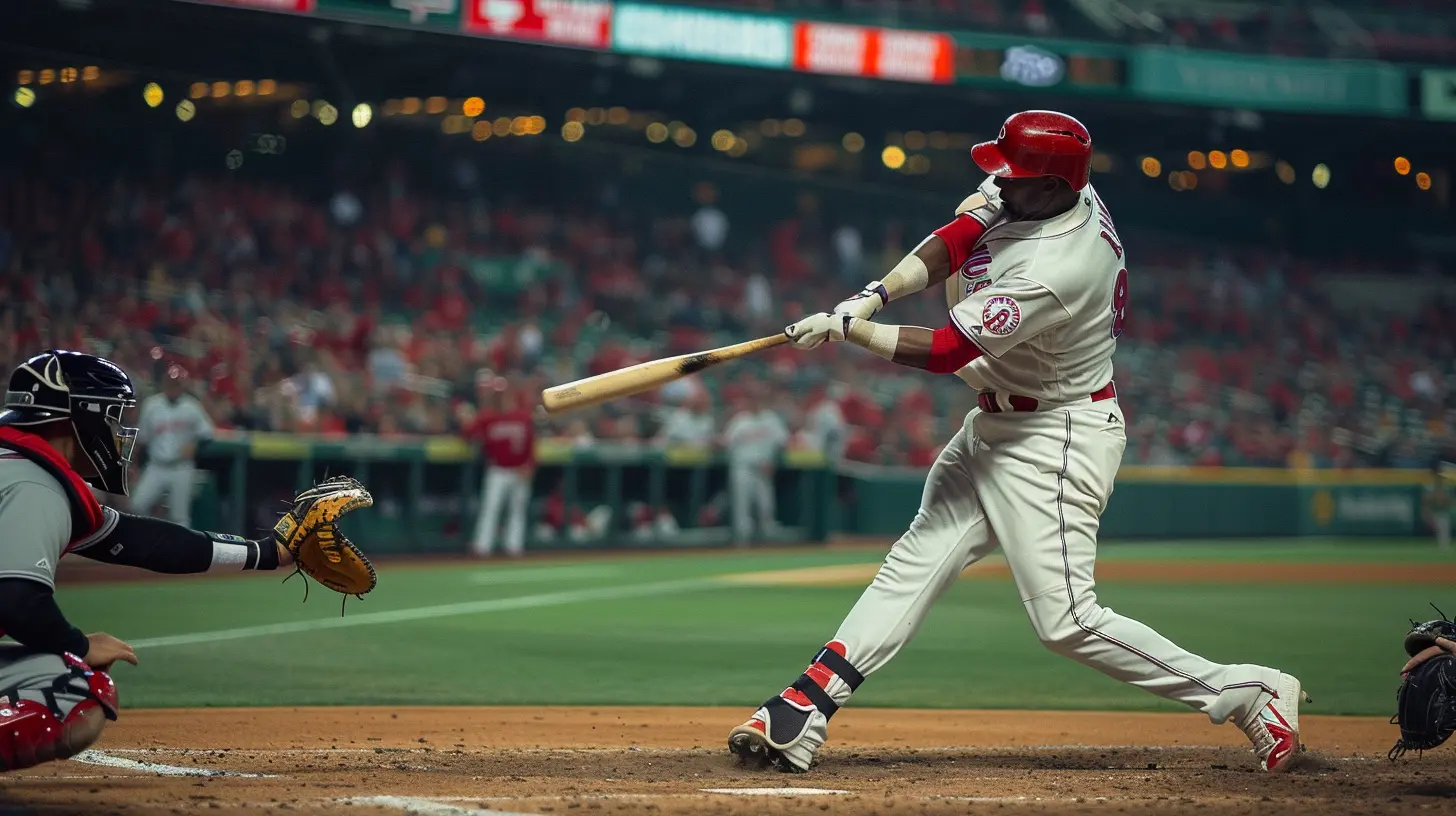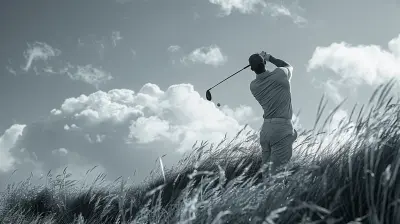The Science Behind the Perfect Swing: Breaking Down Hitting Mechanics
14 May 2025
Hitting a baseball isn’t just about raw power—it’s about precision, timing, and mechanics. Players practice for years to perfect their swing, but what separates the best hitters from the rest? The answer lies in the science of hitting mechanics.
Ever wondered why some players consistently crush the ball while others struggle? It’s not just talent; it’s the combination of physics, biomechanics, and muscle memory that creates the perfect swing. Let’s break it down step by step. 
The Foundation: Stance and Setup
Before a hitter even thinks about swinging, their stance sets the stage for success. A proper setup ensures balance, power, and fluid motion.1. Balance is Key
Think of your stance like the foundation of a house—if it’s shaky, the whole structure falls apart. A solid, athletic stance with feet shoulder-width apart allows for maximum control. Too wide? You lose power. Too narrow? You sacrifice stability.2. Weight Distribution
Your weight should be slightly on the balls of your feet, not your heels. A good rule of thumb is a 60/40 split—60% on the back foot and 40% on the front. This helps generate power when you shift forward during the swing.3. Grip and Hand Placement
A proper grip isn't just about comfort; it determines bat control. Hands should be loose but firm—think of holding a bird: too tight, and you crush it; too loose, and it flies away. Knuckles should align naturally to allow quick wrist action through the zone.
The Load and Stride: Generating Power
Once the stance is solid, the next step is loading and striding. This phase is where hitters store energy before unleashing it.1. The Load Phase
This is where the magic begins. As the pitcher winds up, the hitter subtly shifts their weight back, coiling like a spring. The back knee should bend slightly, and the hands move into a strong hitting position. This prepares the body to explode forward.2. The Stride
The stride is where hitters start transferring energy forward. A small, controlled step (around 4-6 inches) helps maintain balance. A big mistake? Overstriding. It throws off timing and reduces power.Ever seen a batter’s front foot land before they swing? That’s no accident—it’s the trigger that signals the body to unleash its stored energy. 
The Swing: Where Science Meets Power
Now comes the fun part—the actual swing. This is where all the preparation turns into action.1. Hip Rotation and Torque
A great swing starts from the ground up. As the front foot plants, the hips begin rotating. This motion generates a ton of torque—similar to a golf swing or a boxer’s punch. The key? Keeping the hands back until the lower body starts rotating.2. Bat Lag and the Kinetic Chain
Bat lag is when the hands stay behind the rotating hips, creating a whip-like effect. This allows hitters to generate maximum bat speed—kind of like cracking a whip. The kinetic chain (legs → hips → core → arms) ensures energy flows through the body smoothly.3. Hands and Barrel Path
Great hitters don’t chop at the ball or uppercut wildly. Instead, they take a direct path to the ball, staying inside it and driving through it. Think of it as “getting the barrel to the ball” efficiently.
Contact: The Moment of Truth
All that effort leads up to one crucial moment—contact. This is where small details make a huge difference.1. Optimal Contact Point
Hitting the “sweet spot” on the bat is essential. A ball hit too close to the hands results in weak contact, while one hit off the end loses power. The ideal contact point varies depending on pitch location:- Inside pitch: Meet it out in front.
- Middle pitch: Drive it up the middle.
- Outside pitch: Let it travel deeper and go the opposite way.
2. Extension Through the Ball
The best hitters don’t just stop at contact—they extend through the ball, driving it with authority. Ever noticed how elite hitters seem to “stay through” the baseball longer? That’s no accident.3. Follow-Through and Finish
A proper follow-through ensures maximum power and bat speed. Some hitters finish high, others with a more level swing—but the key is staying balanced. If you’re falling off after contact, chances are something went wrong in the swing.The Mental Side of Hitting
Hitting isn’t just physical; it's a mental chess game between the batter and pitcher.1. Recognizing Pitches
Great hitters study pitchers, recognizing patterns and pitch types. Picking up a curveball early or identifying a fastball out of the hand can be the difference between a weak groundout and a home run.2. Staying Relaxed Under Pressure
Tension kills a good swing. Ever heard the phrase “let the game come to you”? It applies here. Hitters who tense up swing stiffly, while relaxed hitters allow their mechanics to flow naturally.3. Adjustments and Adaptability
No hitter is perfect every game. The best ones adjust based on how they’re being pitched. If a pitcher keeps throwing outside breaking balls, a smart hitter doesn’t keep chasing—they adjust their approach.Common Hitting Mistakes (And How to Fix Them)
Even great hitters have flaws. Here are some common mistakes and quick fixes:1. Overstriding
- Problem: Too big of a stride leading to imbalance.- Fix: Shorten stride and focus on staying controlled.
2. Dropping the Back Shoulder
- Problem: Leads to unnecessary uppercuts and pop-ups.- Fix: Keep the back shoulder level through the zone.
3. Rolling Over Too Early
- Problem: Causes weak grounders instead of solid contact.- Fix: Stay through the ball and let the hands lead the swing.
Conclusion: The Path to a Perfect Swing
The perfect swing doesn’t happen overnight. It’s a combination of balance, mechanics, power, and mental approach. But the best part? It’s something players can constantly refine and improve.Every legendary hitter—from Babe Ruth to Mike Trout—has studied and adjusted their mechanics to perfect their craft. Whether you're a young player or a seasoned pro, understanding the science behind a great swing will always give you an edge.
So, the next time you step up to the plate, remember—it’s not just about swinging hard. It’s about swinging smart.
all images in this post were generated using AI tools
Category:
BaseballAuthor:

Umberto Flores
Discussion
rate this article
4 comments
Heather Barnes
Unlock your potential! Mastering the perfect swing combines science and dedication—embrace the mechanics, elevate your game, and achieve greatness!
May 19, 2025 at 12:47 PM

Umberto Flores
Thank you! Embracing the science of hitting mechanics is key to unlocking true potential in the game. Let's elevate our swings together!
Tristan Tucker
This article brilliantly illustrates the physics of a perfect swing, offering valuable insights for players seeking to enhance their hitting mechanics effectively.
May 19, 2025 at 2:57 AM

Umberto Flores
Thank you! I'm glad you found the article helpful for improving hitting mechanics.
Cecilia Wheeler
This article does a fantastic job of simplifying complex mechanics. Understanding the science behind the perfect swing not only enhances performance but also deepens appreciation for the game. Great insights for players at all levels!
May 16, 2025 at 7:30 PM

Umberto Flores
Thank you for your kind words! I’m glad you found the insights helpful for both performance and appreciation of the game.
Sylvan Clayton
Mastering the perfect swing is an exhilarating journey of science and skill! By understanding the mechanics behind every movement, athletes can unlock their true potential. Embrace the grind, learn from every swing, and let your passion propel you to greatness. The perfect swing is not just a dream—it's within your reach!
May 15, 2025 at 4:27 AM

Umberto Flores
Thank you for your insightful comment! Embracing the science of swing mechanics truly empowers athletes to elevate their game. Let's keep pushing towards that perfect swing!



